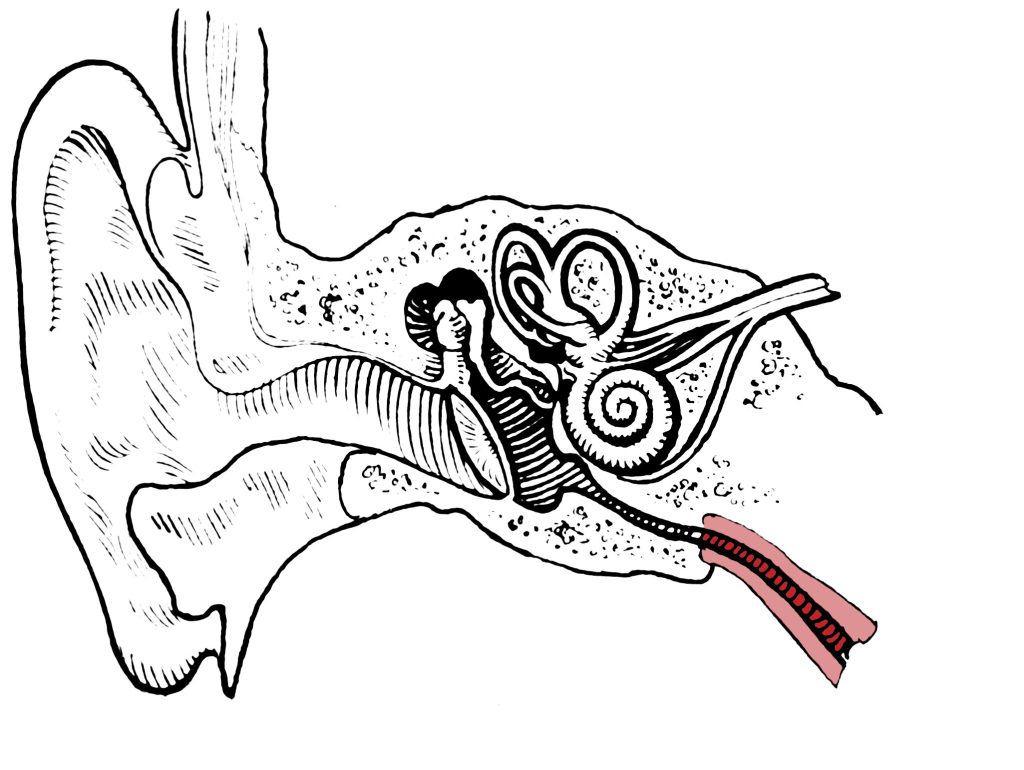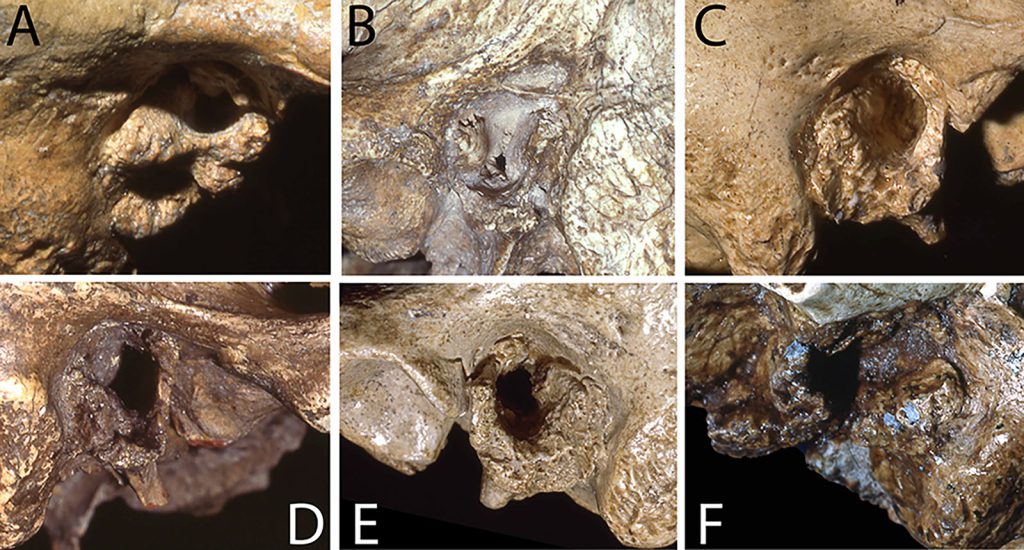The Neanderthal Ear—Prone to Irritating Infections
As I sit writing this column post, my sinuses feel like they are made of concrete, and my ears are aching and clogged to the point of causing vertigo, creating the sensation that I am on a gently rocking ship. As it turns out, I may be experiencing an ailment that afflicted the average Neanderthal all too often.
There are a handful of bacteria that cause otitis media, a painful inflammation of the middle ear. Human infants are particularly prone to the effects of these bacteria because their Eustachian tubes—the channels that connect the middle ear to the upper throat and back of the nasal cavity—are relatively flat. This allows the bacteria to lurk in the warm, dark ear canal and cause repeated infections. As children age, the angle of the Eustachian tubes becomes more acute, tipping down toward the throat and allowing fluids to drain more easily. As a result, the ear canals are less moist and so less hospitable to bacteria. (Although adults, like me, do still sometimes fall victim.)
A recent study published in The Anatomical Record reconstructs adult Neanderthal Eustachian tubes. The researchers compared high-resolution scans of three adult Neanderthal skulls to similar scans of the skulls of modern humans at similar ages. They then used digital modeling software to reconstruct the cartilage of the ear canal to fit inside each digitized skull.
The work showed that—unlike modern humans—Neanderthal ear canals did not change angle with age but remained flat into adulthood. This would have meant a higher potential for ear infections and accompanying complications, like pneumonia, respiratory infections, and even permanent hearing loss. Not only would these illnesses present a very real threat to Neanderthals, who did not have access to antibiotics, but the overall toll of being sick time and again would have been a real disadvantage. Homo sapiens was within the same landscape at that time (around 40,000 years ago), and, like modern humans, probably developed ear canals that were less prone to infection with age. (The researchers note more work is needed to confirm that.)
Studies such as this, that reconstruct soft tissue using skeletal remains, give researchers access to parts of the Neanderthal body that are often overlooked.
A second study points to evidence of another kind of infection that may have plagued Neanderthal ears: bony growths on the skull caused by repeated cases of “swimmer’s ear.” Bouts of this condition are typically caused by bacterial infections in the outer ear, as opposed to the inner ear, and can cause pain, itching, and muffled hearing. Very rarely, complications from swimmer’s ear can be fatal.
A study published in the journal PLOS ONE looked at 77 Neanderthal skulls and found that about 48 percent of them showed signs of swimmer’s ear. That’s about twice as much as in anatomically modern humans from the same time period (around 60,000–40,000 years ago)—although in a few spots, such as the Canary Islands and southern Brazil, modern humans of that time had high rates of swimmer’s ear.
Swimmer’s ear usually occurs when the ear canal is repeatedly exposed to cold water. There’s evidence that certain Neanderthal populations were eating seafood, but this study hints that they may have been spending a lot more time foraging in water than previously thought.
There are other possible explanations, though. One is the simple fact that Neanderthals likely had poor hygiene. Another possibility is that Neanderthals may have been more genetically susceptible to swimmer’s ear than modern humans, just as some human populations today are more susceptible to the condition than others. Maybe the condition simply came from spending too much time in damp, cold caves?
As is often the case with studies based on the bioarchaeological record of the deep past, these analyses of the Neanderthal ear have raised more questions than they have answered. Did Neanderthals suffer from perpetual earaches? Were they spending more time in the water or using aquatic resources more than we thought? We will simply have to wait to hear more.
This column is part of an ongoing series about the Neanderthal body: a head-to-toe tour. See our overview page.

































